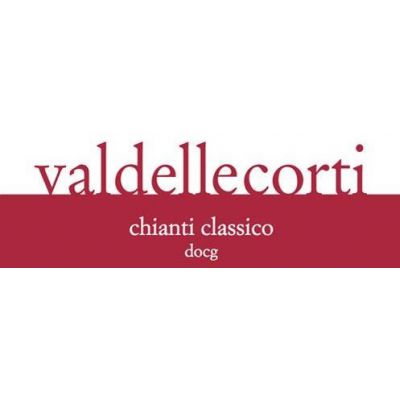Val delle Corti Extra Toscana 2016
Val delle Corti ist das Resultat eines paradoxen Experiments seiner Eltern, erzählt Roberto Bianchi. 1974 zogen Giorgio und Eli Bianchi mit dem neunjährigen Roberto von Mailand nach Radda ins Herz des ursprünglichen Chianti Classico-Gebietes. Damals war das sehr mutig, denn als Autodidakten übernahmen sie ein komplett verlassenes Gut in einer verwilderten Gegend. Radda ist mit ca. 500 m über dem Meeresspiegel der höchstgelegene Ort im ganzen Chianti Classico-Gebiet. Früher war das ein Nachteil. „Radda war das Aschenputtel“, sagt Roberto über den Ort – zu hochgelegen, zu kalt, die Weine zu streng, um guter Chianti zu sein. Keine Winzerfamilie, die etwas auf sich hielt, wollte in Radda Chianti machen. Mit dem Klimawandel hat sich das komplett geändert. Heute sagt Roberto mit einem Lachen, „Radda rules“. Jetzt kommen Robertos Weinen die hochgelegenen Weinberge und die Kühle sehr zu Gute. Während Winzern in niedrigen Lagen die Weine zu reif und alkoholisch geraten, produziert Roberto auf Val delle Corti Weine, die Frische, Eleganz und Reife vereinen. So, wie unserer Meinung nach guter Chianti Classico sein sollte – mit Finesse und Struktur, aber nicht dick und marmeladig. Val delle Corti baut inzwischen auf 6 Hektar hauptsächlich Sangiovese, etwas Canaiolo, Merlot und Malvasia Nera an. Abgesehen vom Merlot, eine typische Chianti-Mischung. Zwei weitere Hektar sind gepachtet. Seit 2020 sind nicht nur die Weinberge, sondern auch der Keller bio-zertifiziert. Teilweise wird biodynamisch gearbeitet. Die Weine entstehen im Weinberg mit viel Handarbeit und Aufmerksamkeit. „Das Geheimnis“, sagt Roberto,“ ist, dem Sangiovese und dem Boden treu zu bleiben.“ Als sein Vater 1999 unerwartet früh starb, stand Roberto vor einer wegweisenden Entscheidung. Sollte er Val delle Corti weiterführen oder aufgeben? Er entschied sich, zu bleiben. Heute, nach über 20 Jahren, sagt er, es war die richtige Entscheidung. Auch wir sind sehr froh, dass er so entschieden hat und seine Weine, diese Ergebnisse eines Experiments, mit uns teilt!
Abfüller: Az.agr. Valdellecorti da Roberto Bianchi, 53017 Radda in Chianti, Italien
Hinweise: Abbildung kann vom Original in Form und Farbe abweichen. Für die obigen Angaben wird keine Haftung übernommen. Verbindlich sind nur die Informationen auf der jeweiligen Produktverpackung. Bitte überprüfen Sie diese im Einzelfall.
Allergene:
Enthält Sulfite

Val delle Corti
Val delle Corti ist das Resultat eines paradoxen Experiments seiner Eltern, erzählt Roberto Bianchi. 1974 zogen Giorgio und Eli Bianchi mit dem neunjährigen Roberto von Mailand nach Radda ins Herz des ursprünglichen Chianti Classico-Gebietes. Damals war das sehr mutig, denn als Autodidakten übernahmen sie ein komplett verlassenes Gut in einer verwilderten Gegend. Radda ist mit ca. 500 m über dem Meeresspiegel der höchstgelegene Ort im ganzen Chianti Classico-Gebiet. Früher war das ein Nachteil. „Radda war das Aschenputtel“, sagt Roberto über den Ort – zu hochgelegen, zu kalt, die Weine zu streng, um guter Chianti zu sein. Keine Winzerfamilie, die etwas auf sich hielt, wollte in Radda Chianti machen. Mit dem Klimawandel hat sich das komplett geändert. Heute sagt Roberto mit einem Lachen, „Radda rules“. Jetzt kommen Robertos Weinen die hochgelegenen Weinberge und die Kühle sehr zu Gute. Während Winzern in niedrigen Lagen die Weine zu reif und alkoholisch geraten, produziert Roberto auf Val delle Corti Weine, die Frische, Eleganz und Reife vereinen. So, wie unserer Meinung nach guter Chianti Classico sein sollte – mit Finesse und Struktur, aber nicht dick und marmeladig. Val delle Corti baut inzwischen auf 6 Hektar hauptsächlich Sangiovese, etwas Canaiolo, Merlot und Malvasia Nera an. Abgesehen vom Merlot, eine typische Chianti-Mischung. Zwei weitere Hektar sind gepachtet. Seit 2020 sind nicht nur die Weinberge, sondern auch der Keller bio-zertifiziert. Teilweise wird biodynamisch gearbeitet. Die Weine entstehen im Weinberg mit viel Handarbeit und Aufmerksamkeit. „Das Geheimnis“, sagt Roberto,“ ist, dem Sangiovese und dem Boden treu zu bleiben.“ Als sein Vater 1999 unerwartet früh starb, stand Roberto vor einer wegweisenden Entscheidung. Sollte er Val delle Corti weiterführen oder aufgeben? Er entschied sich, zu bleiben. Heute, nach über 20 Jahren, sagt er, es war die richtige Entscheidung. Auch wir sind sehr froh, dass er so entschieden hat und seine Weine, diese Ergebnisse eines Experiments, mit uns teilt!

